Chaotic piles of paint cans, sports gear, and tangled extension cords can turn a garage into a dumping ground instead of the hardworking heart of the house. Years of designing workshops have taught me that garage storage succeeds only when every inch—floor, wall, and ceiling—earns its keep while still leaving room to park the car. By pairing heavy-duty hardware with clever DIY tweaks, you can reclaim square footage, protect valuables from moisture, and swap frantic searches for quick, confident grabs. Ready to discover how versatile an ordinary concrete box can become? Let’s explore practical ideas that work as hard as you do.
1. Elevate Bulky Items with Overhead Ceiling Racks
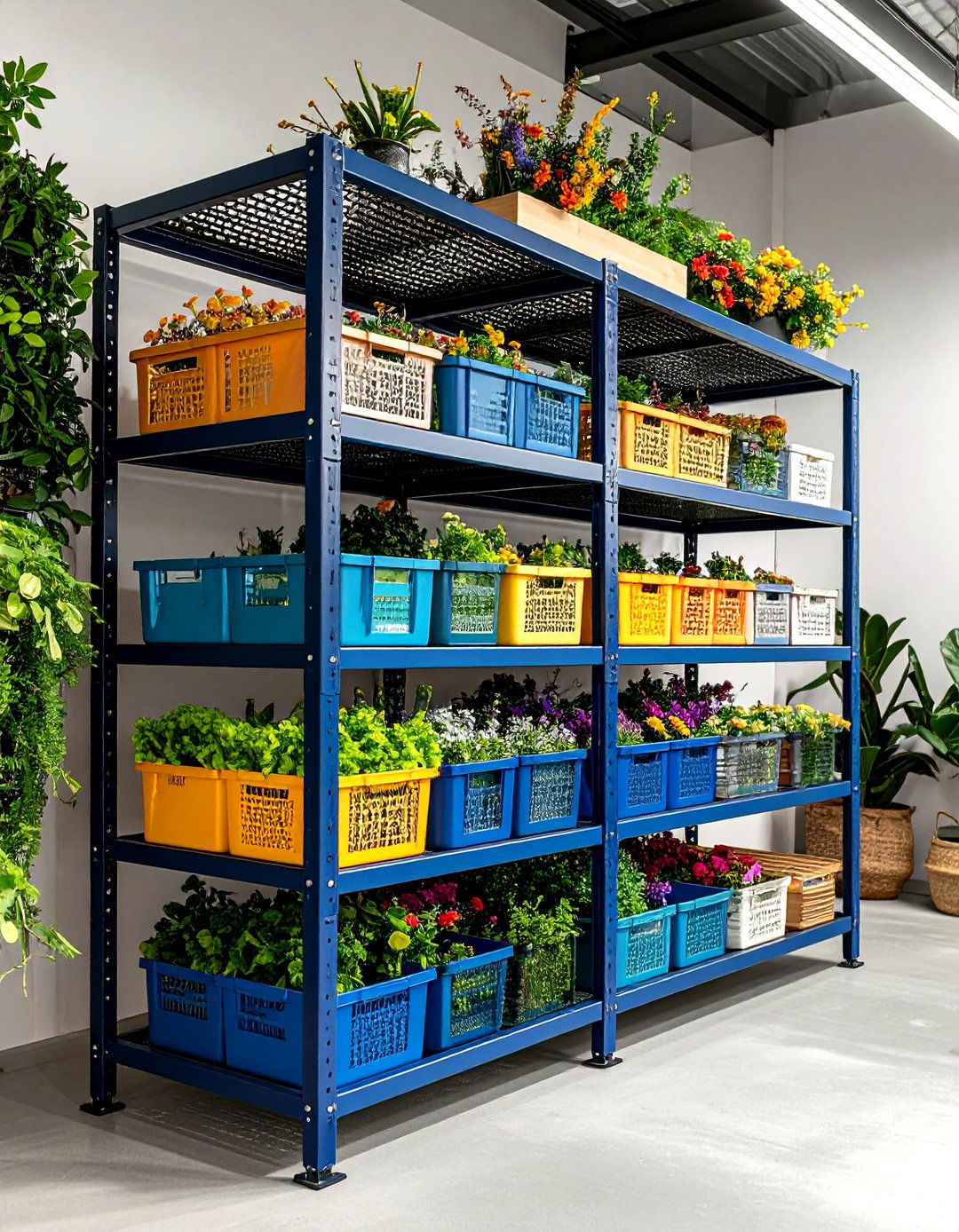
A bulky kayak, snow tires, or holiday décor suddenly feels weightless when you load it onto a sturdy overhead ceiling rack, freeing the perimeter walls for items you use weekly. Modern steel frames bolt into joists and support 250–600 pounds, and adjustable heights let you slide totes up from a step stool before retracting them to rafter level for uninterrupted headroom. Ventilated steel mesh promotes airflow, so contents stay dry even if water pools on the floor after a wash. Finish by labeling each tote by season to make rotation painless.
2. Line the Walls with Customizable Slatwall Panels

The bland expanse behind your parked car transforms into high-capacity garage storage when you snap in slatwall panels. Grooved channels accept hooks, baskets, and shelves that can slide or swap in seconds, letting a leaf blower occupy the same strip that once held softball bats. Because weight distributes across a broad panel instead of individual studs, you gain confidence to hang awkward gear without tearing drywall. Pair panels with color-coded bins and clip-on labels so every family member can return items to their rightful slot, cutting weekend clutter battles before they start.
3. Create a Pegboard Command Center
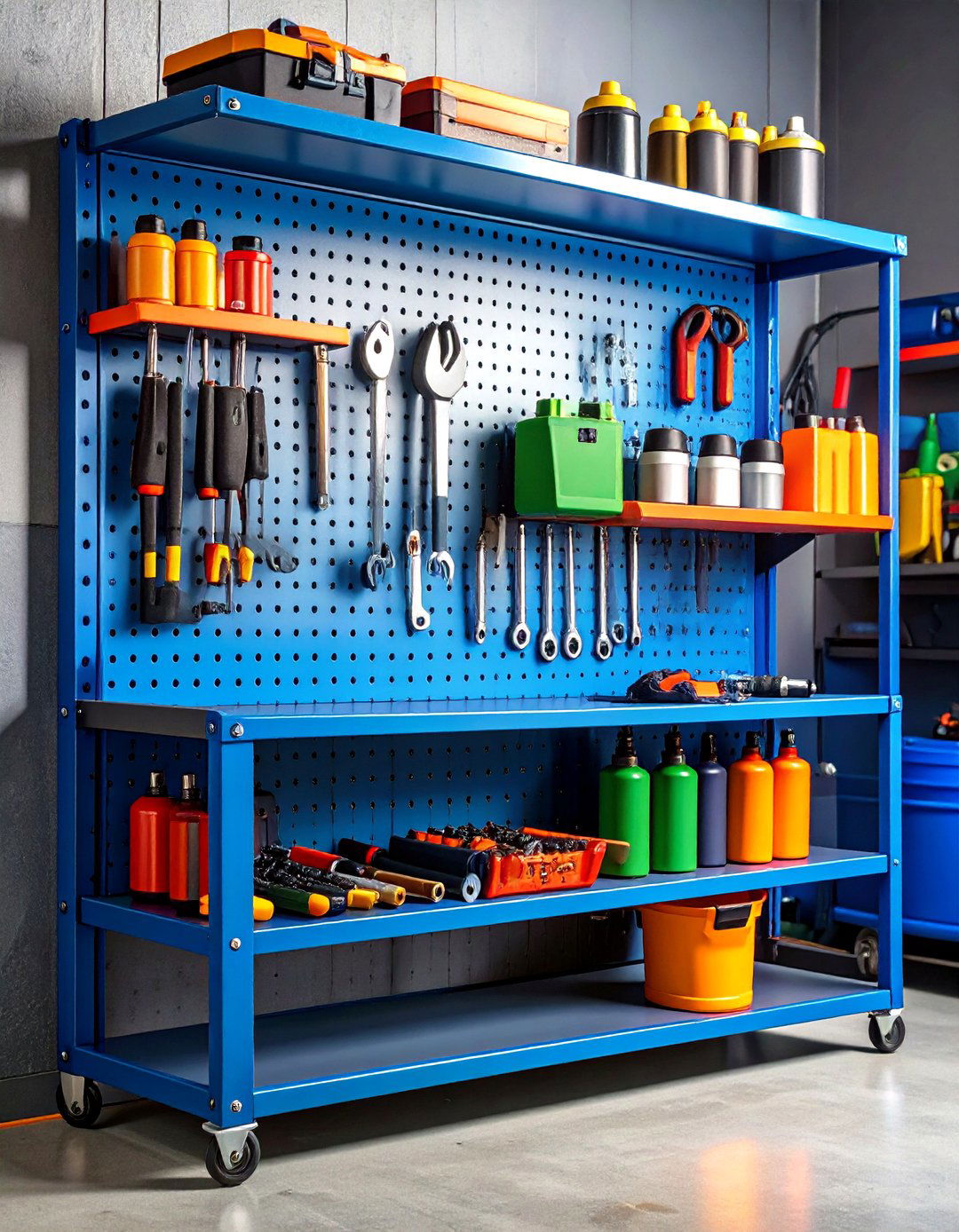
Unlike pegboard’s humble craft-room cousin, today’s heavy-duty versions use fiber-reinforced panels and locking hooks to tame even steel mallets. Mount one above the workbench and outline each wrench with marker; silhouettes cue you to return tools after a project. Add narrow shelves for spray paint, and snap elastic loops over screwdrivers so tips never tumble. For small spaces, paint the board the same color as the wall so it visually recedes, letting tools become the artwork. A pegboard command center turns “Where’s my 10 mm socket?” into a question of the past.
4. Lift Bikes Out of the Way with a Ceiling Hoist
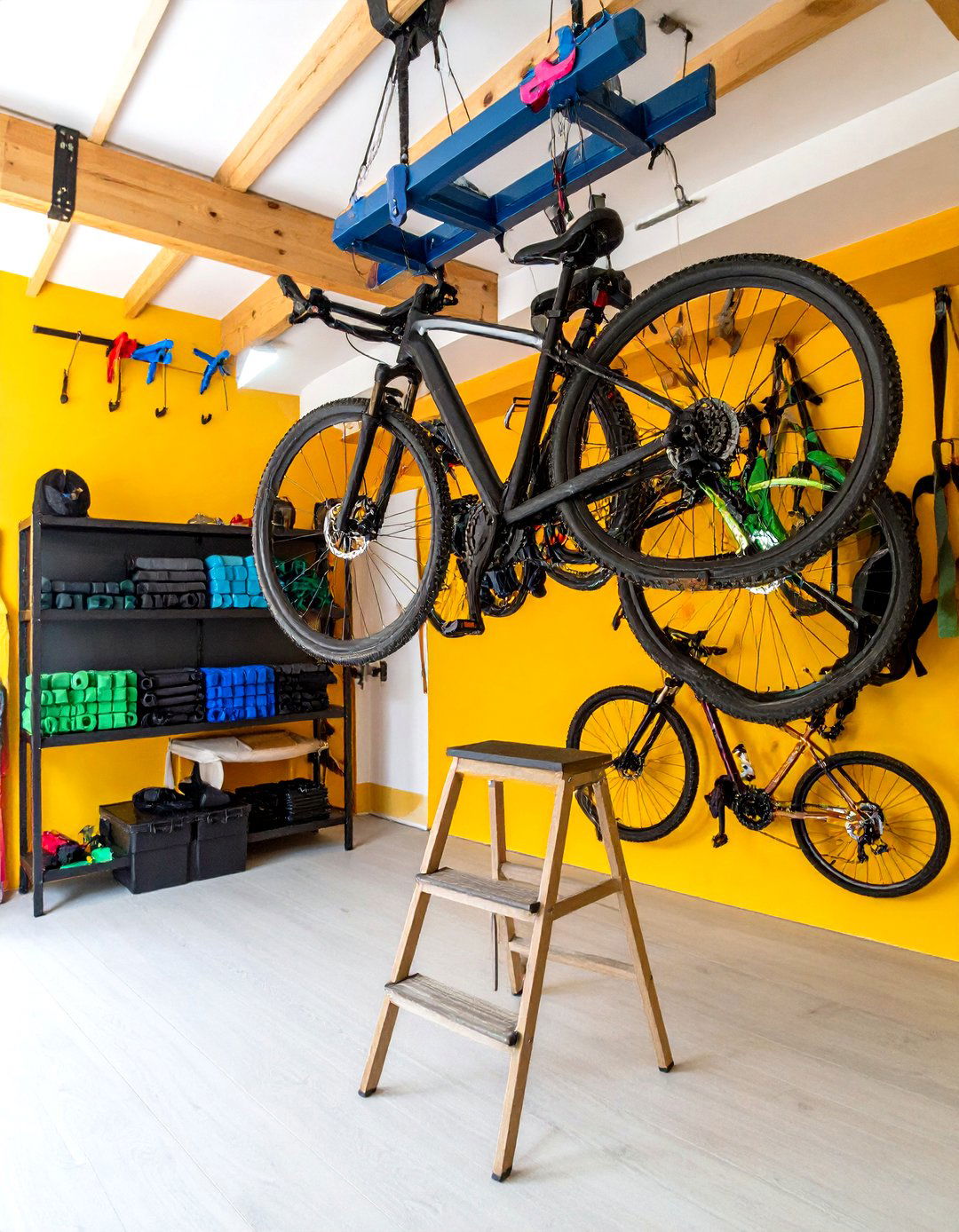
For anyone juggling kids’ bikes, mountain bikes, and e-bikes, a ceiling hoist clears precious floor space in minutes. Pulleys offer a 4:1 mechanical advantage, so even a ten-year-old can raise a 70-pound ride to the rafters. Look for locking cleats that grip automatically once you stop pulling, eliminating the fear of accidental drops. Mount hoists parallel or perpendicular to joists to match your roof layout, and install bicycle-shaped hooks so frames hang level. The result is an uncluttered aisle, safer walkways, and tires that stay round instead of developing flat spots.
5. Install a Fold-Down Workbench That Disappears
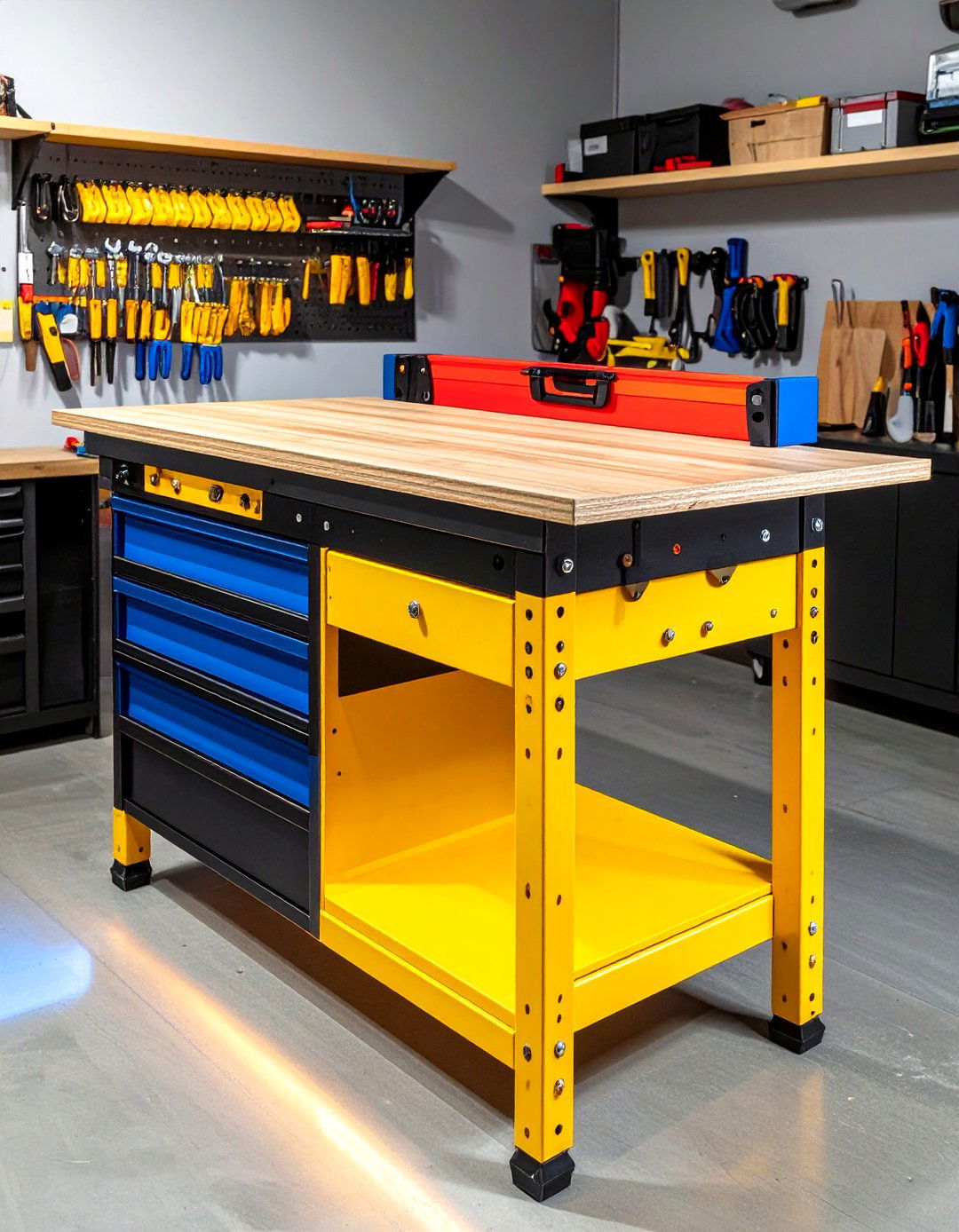
When square footage is tight, a fold-down workbench offers a rock-solid workspace that tucks flush against the wall after the job. Hinged steel brackets support a laminated top for sanding, potting, or laptop diagnostics, yet collapse with one hand when you need to pull in the car. Integrated French cleats above the bench keep chisels and paintbrushes within arm’s reach while you work. Add a magnetic LED strip underneath to illuminate projects without desk lamps hogging surface area. The bench disappears, but productivity stays ready whenever inspiration strikes.
6. Keep Tools Mobile on a Rolling Cart
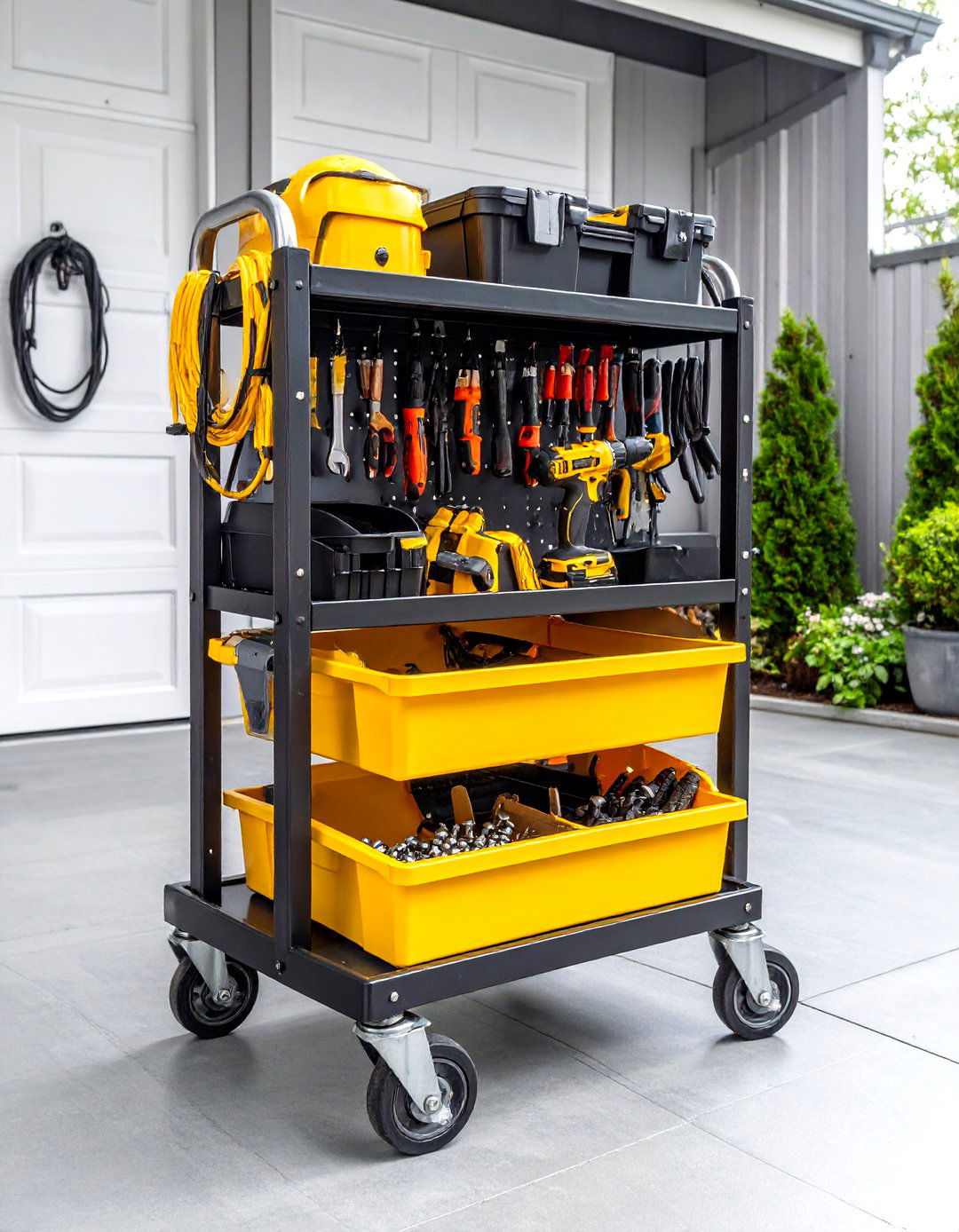
Rolling carts turn static garage storage into a flexible workshop you can push wherever you’re tackling a project. Heavy-gauge steel frames hold 300-plus pounds, while deep lips keep sockets from skittering off during transport. Designate one tier for fasteners, another for cordless drills, and the top for the project at hand, so you’re never sprinting back to shelves for missing bits. Large, lockable casters glide over extension cords yet anchor the cart when torqueing bolts. When the work is done, wheel it against a wall and reclaim the aisle instantly.
7. Store Seasonal Gear in Clear, Stackable Bins
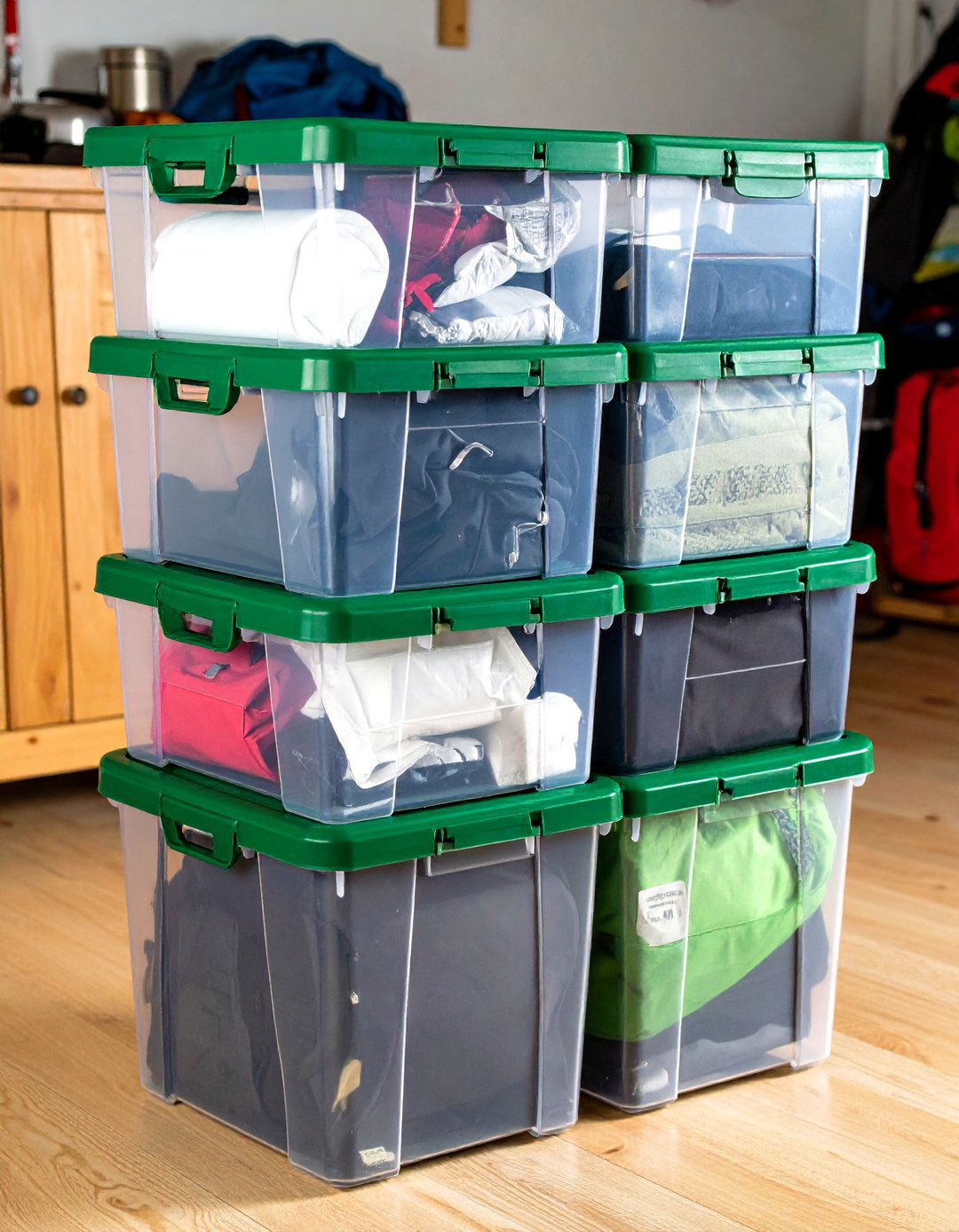
Translucent, weather-tight bins protect decorations, camping gear, and off-season clothing from pests and humidity while letting you see contents at a glance. Choose interlocking lids that click into reinforced corners so towers stay rigid even four boxes high. Slide desiccant packs inside to combat condensation, and group by holiday or sport so a single bin swap updates décor without digging. Because clear plastic admits light, label fronts in bold color to counter visual busy-ness and ensure quick identification from across the room.
8. Fill Dead Corners with Floating Shelves
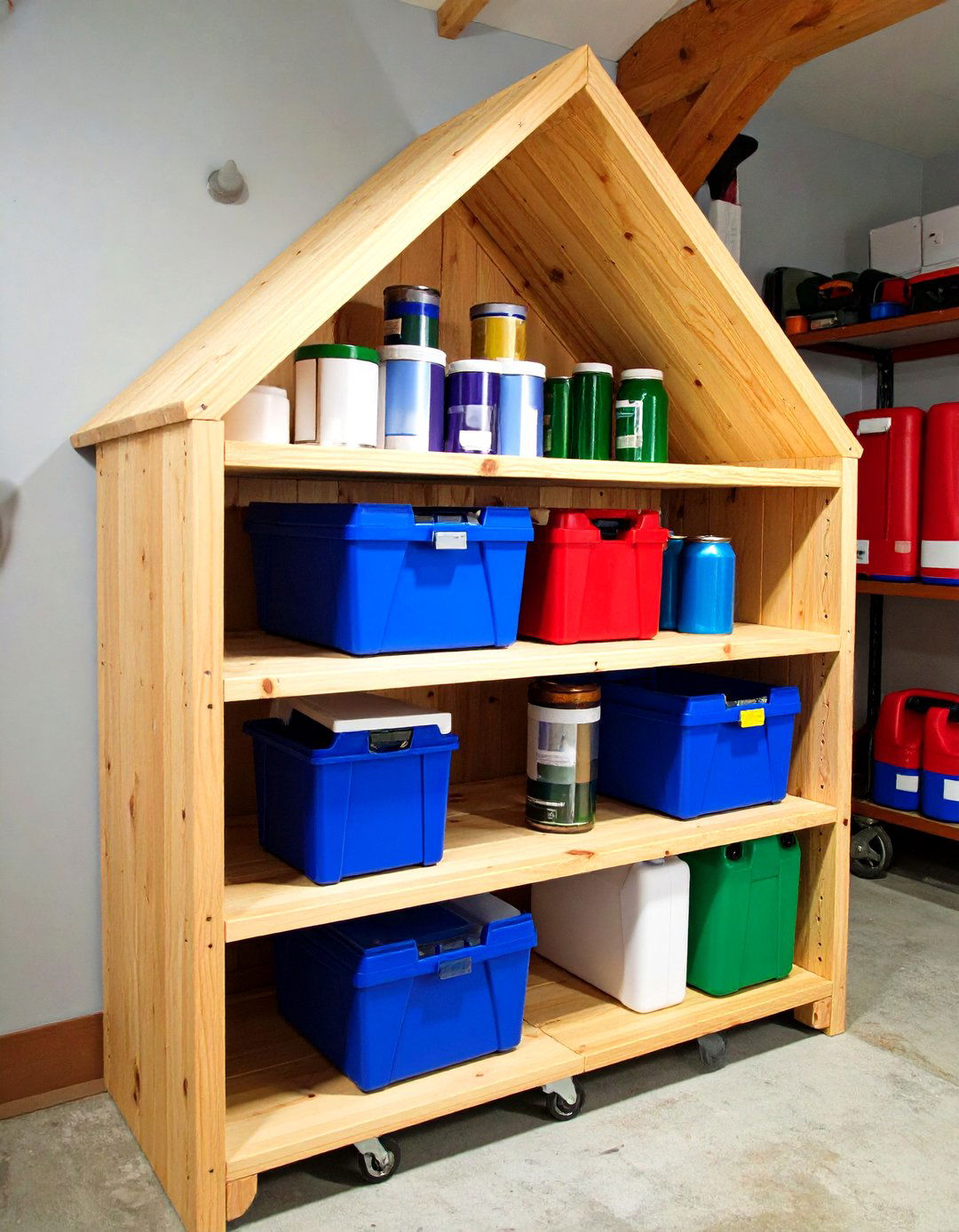
Dead air in garage corners often hides cobwebs, but floating plywood shelves framed with simple 2×4s convert that void into vertical treasure. By securing cleats on both adjacent walls, each triangular tier distributes weight downward, letting you stack paint cans three high without sagging. Start at counter height for easy reach, then stagger additional levels upward to accommodate tubs or coolers. A quick sketch and materials list before cutting lumber prevents waste and speeds assembly. Suddenly, that forgotten nook becomes prime real estate for infrequently used supplies.
9. Snap Metal Tools onto Magnetic Strips
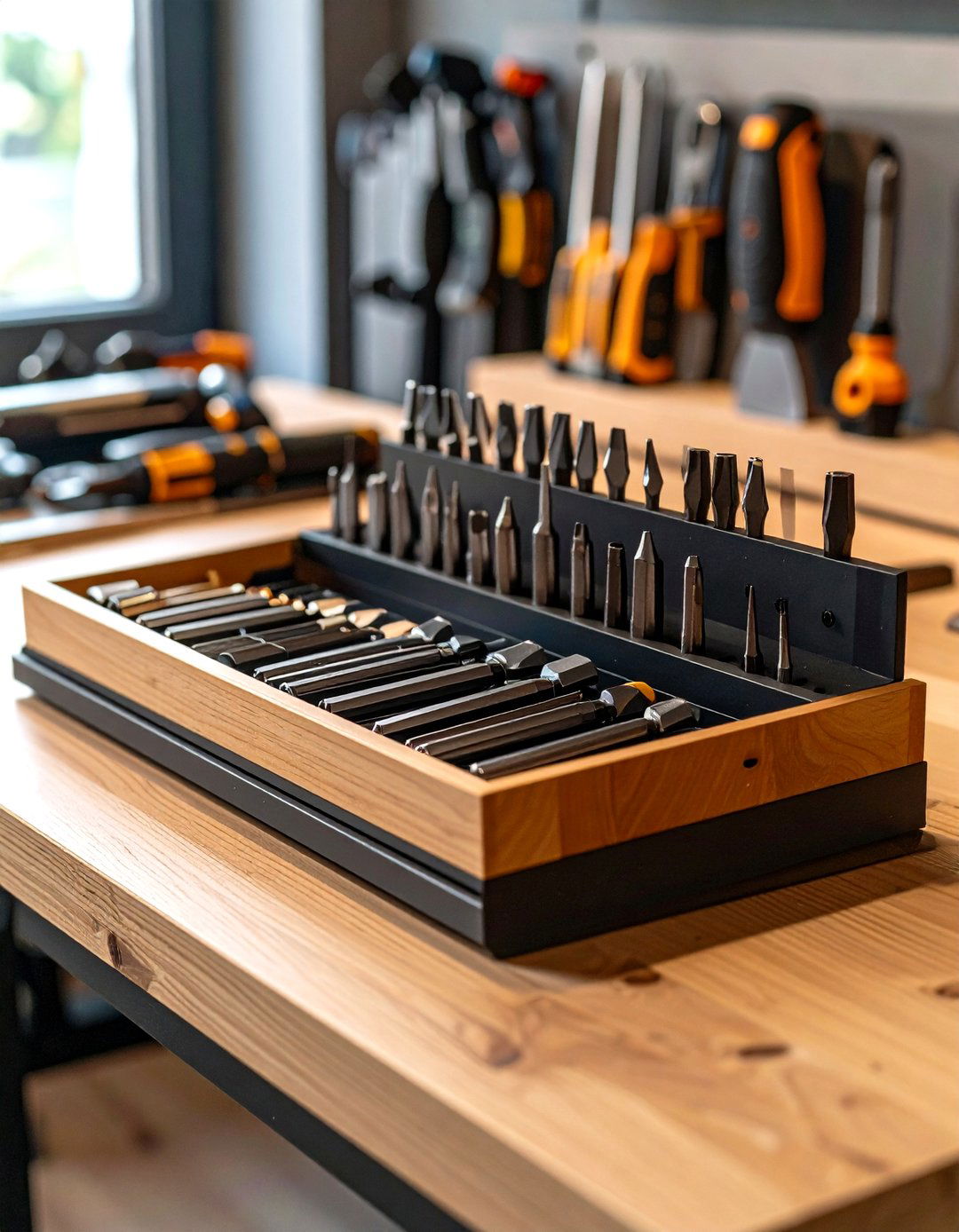
A slim magnetic strip turns empty backsplash into an instant tool rack that keeps blades and bits visible yet safely out of toddlers’ reach. Mount one above the bench to cradle chisels, Allen keys, and even a framing square, or install inside cabinet doors to free drawer space. For extra security, pick strips with a 30-pound pull rating and rubberized surfaces that won’t scratch chrome. Because magnets grip only ferrous metals, add small adhesive-backed steel plates to plastic-handled precision screwdrivers so everything sticks in the same tidy row.
10. Fashion PVC Pipe Racks for Power Drills

PVC off-cuts become purpose-built holsters that let cordless drills slide in handle-first and charge while hanging. Cut 75 mm pipe at a 45-degree angle, pre-drill mounting holes, and secure five in a row under a shelf. Each pipe cradles a drill’s battery yet leaves the chuck exposed for quick bit changes. Paint the rack the same color as the wall for a built-in look or label each pipe with drill size so family members return tools to the right slot. The ten-minute project keeps expensive drivers off dusty benches and out of harm’s way.
11. Hoist a Kayak with a Heavy-Duty Pulley

Storing a 14-foot kayak along a wall consumes real estate fast, but a ceiling-mounted pulley lifts it overhead with barely a tug. Modern systems handle up to 200 pounds and fit ceilings up to 14 feet, so canoes and roof-top-box lids ride side-by-side in the rafters. Foam-padded saddles protect delicate hulls, while auto-locking ratchets prevent accidental drops. For even faster launch days, mark the rope at the ideal loading height; when the color-coded stripe aligns with the cleat, you’re ready to slide the boat onto your roof rack.
12. Turn Recycling into a Tidy Tower

Stackable recycling bins create a vertical chute that sorts glass, paper, and plastic without monopolizing floor space. Swing-open fronts let you toss cans while another bin rests on top, and durable polypropylene stands up to damp garage micro-climates. Color-code lids to match municipal guidelines, and tape laminated cards inside so kids remember what goes where. When pickup day arrives, carry each bin’s built-in handles to the curb instead of wrangling flimsy bags. The tower keeps eco-habits convenient—and the garage walkway clear.
13. Convert a Pallet into a Garden Tool Rack
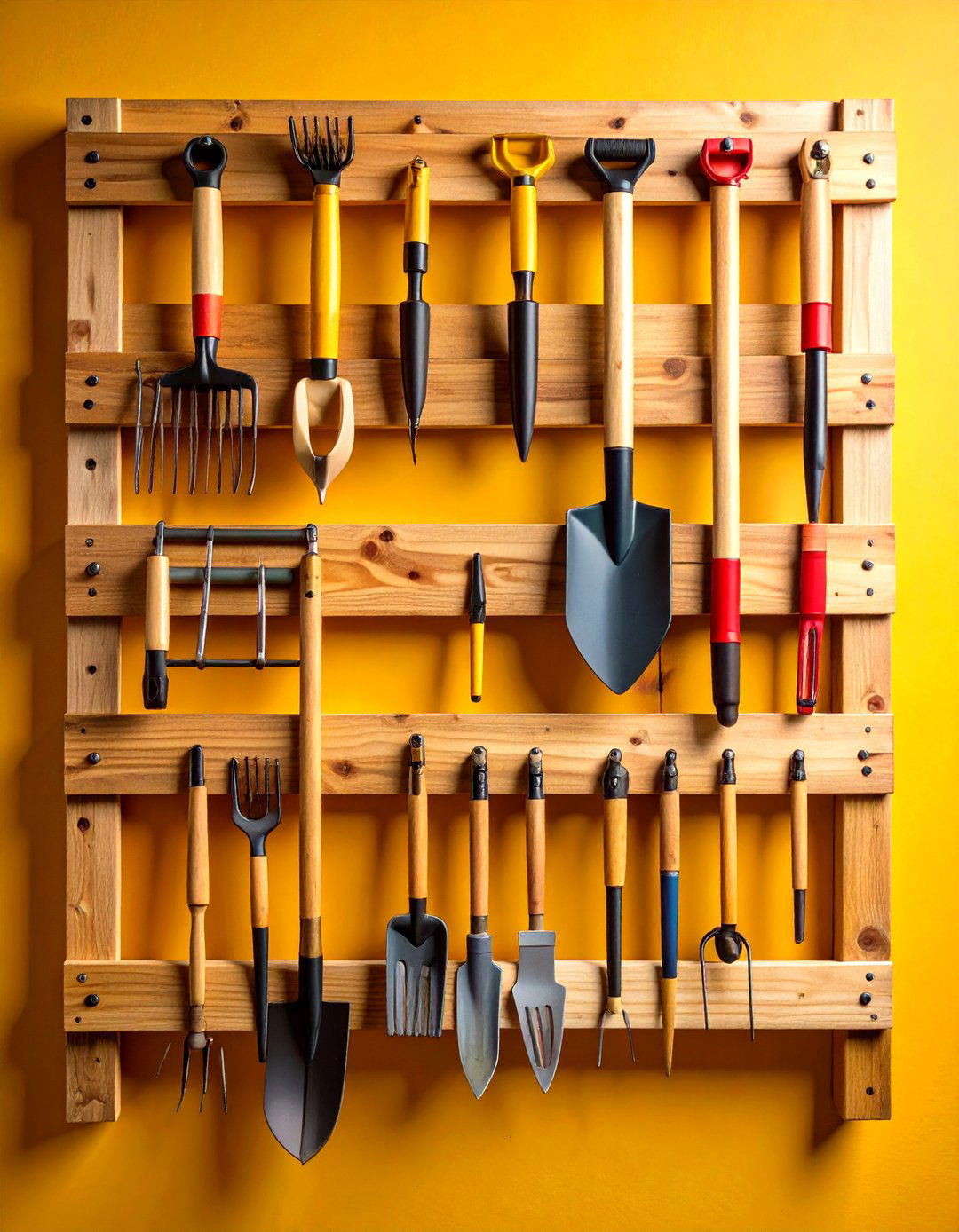
An up-cycled pallet mounted horizontally acts like a giant comb, corralling rakes, shovels, and hoes between its slats. Sand rough edges, apply weather-resistant stain, and screw the pallet to studs two feet above the floor; long handles drop neatly between boards, while shorter trowels perch across the top. Because wood expands and contracts with humidity, pilot holes prevent splitting and prolong life. Add a small hook on either end for pruners or gloves, and your garden kit hangs ready without crowding the mower’s parking spot.
14. Hang Ladders Securely on Heavy-Duty Hooks
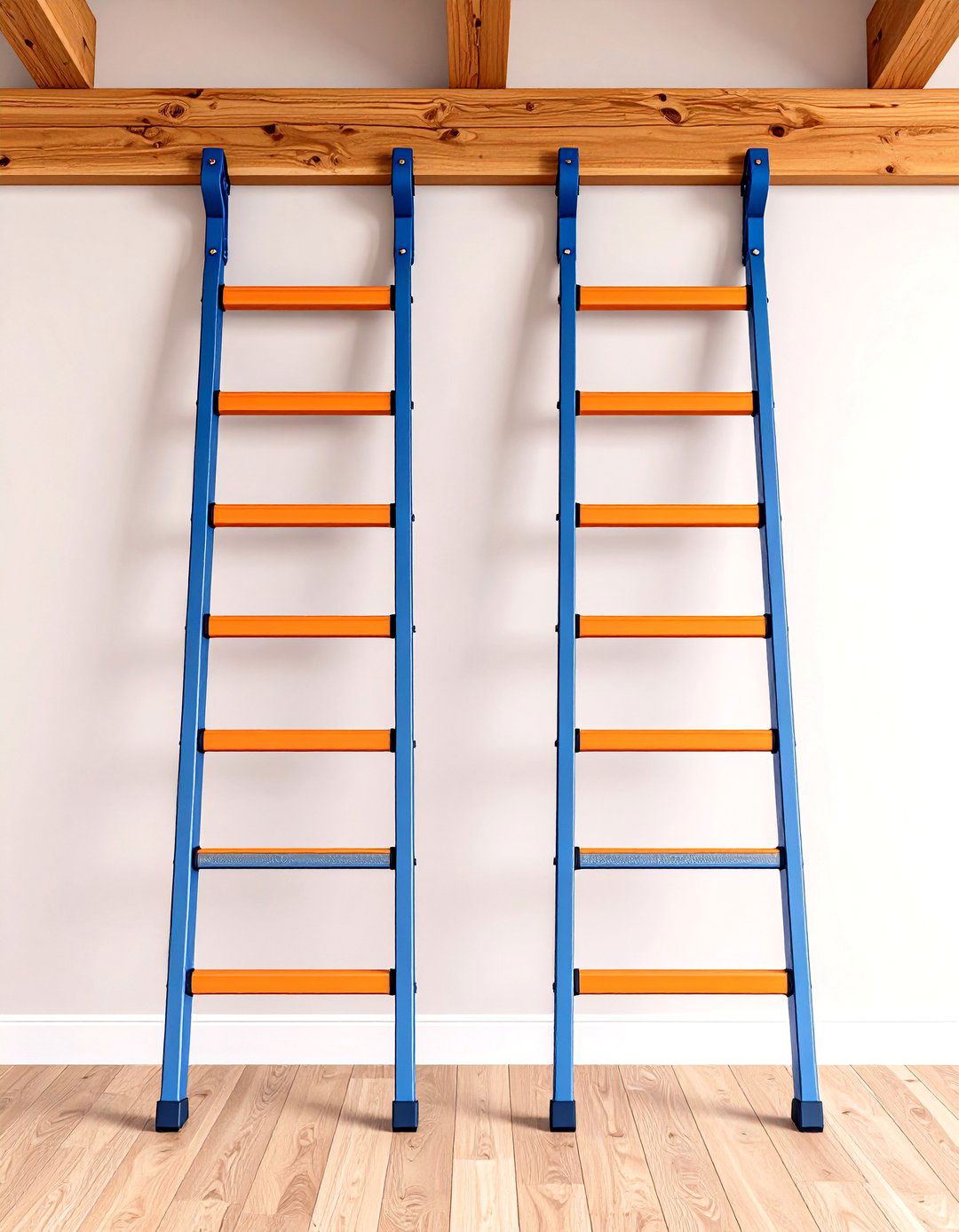
Ladders leaning in corners invite dents—and accidents. Pairing them with powder-coated steel hooks rated over 50 pounds anchors the rungs safely against the wall. Install two hooks per ladder at stud locations, spacing them so rails sit level, and angle the lower hook slightly upward to prevent sliding. Rubber sleeves protect fiberglass rails, while bright colors cue you to duck when walking beneath. With ladders lifted, brooms or trim boards can stand in the newly freed corner.
15. Screw Mason Jars under Shelves for Tiny Parts
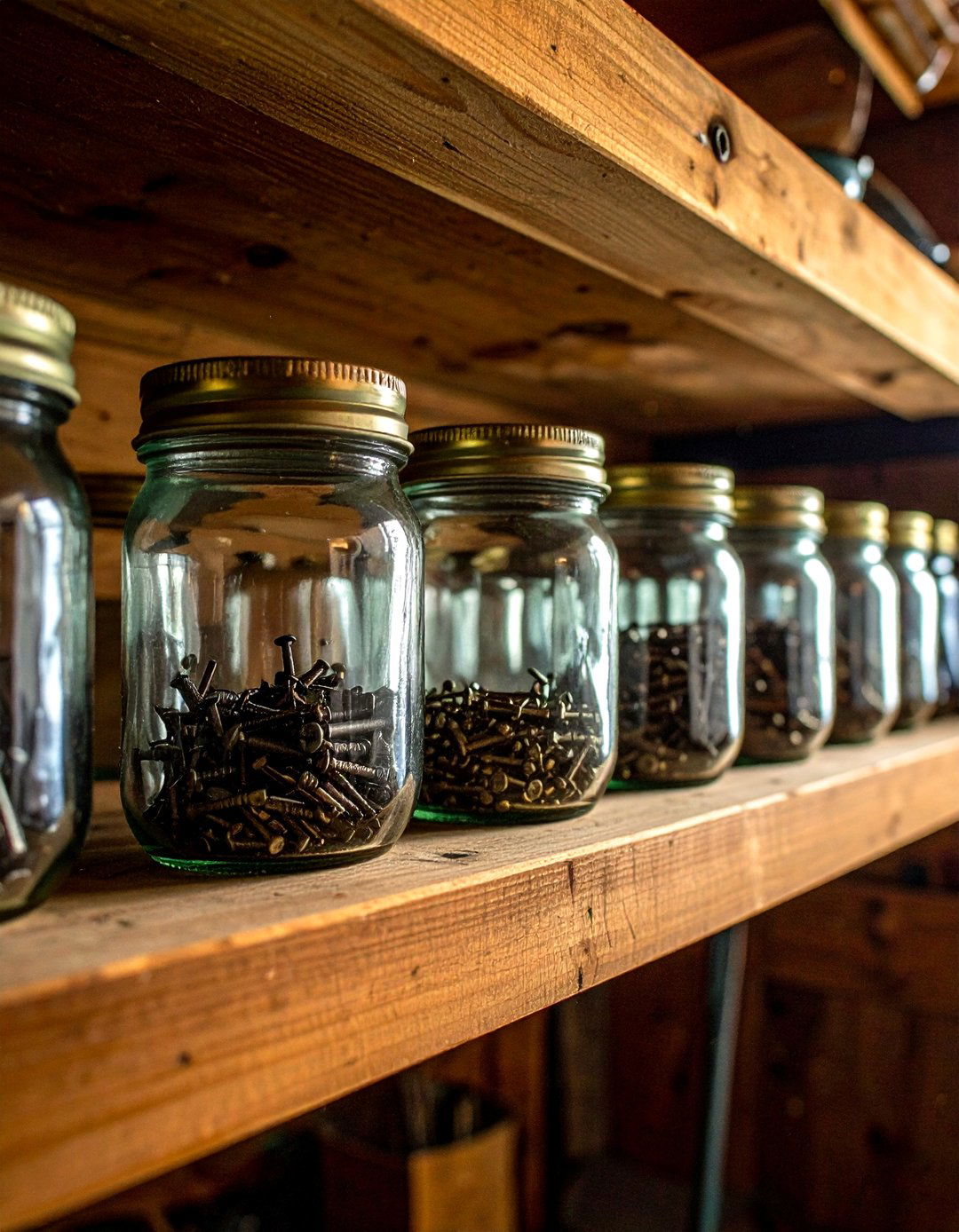
Those glass jars that once held pasta sauce become clear capsules for screws, nails, and picture-hanging kits when screwed under a shelf. Drill pilot holes through each lid, drive short screws into the underside of a 2×4, then twist filled jars in place. The transparent bottoms reveal contents instantly, and lids stay captive, so nothing scatters if a jar drops. Arrange them in rows of three or four to avoid excess weight on one beam, and label jar bases with paint pen for faster grabs.
16. Color-Code and Label Every Bin
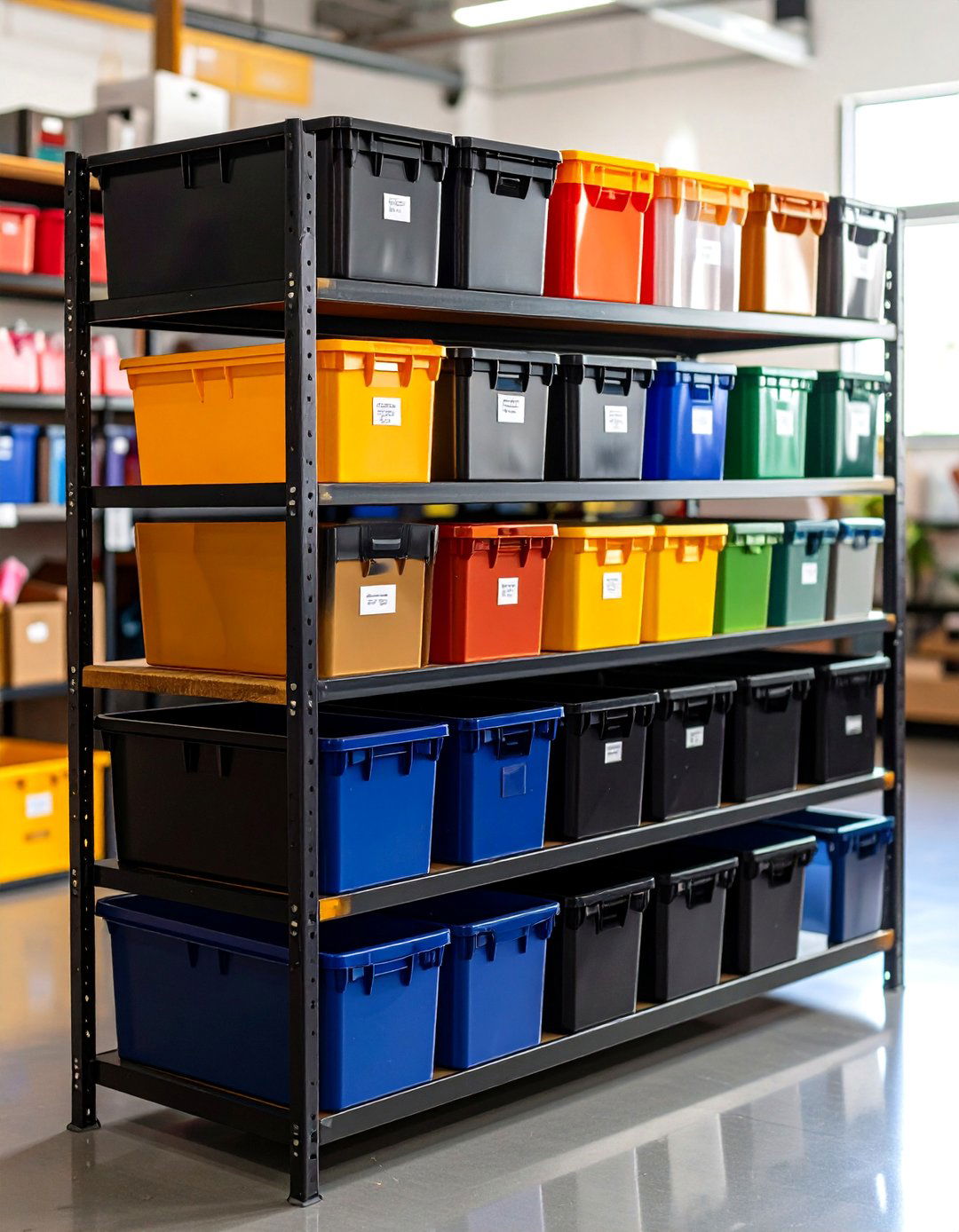
Certainly, the simplest upgrade for garage storage is disciplined labeling—yet it delivers outsized dividends in speed and sanity. Choose durable vinyl stickers in bold hues—blue for camping, orange for automotive, green for garden—and apply them both to bin fronts and shelf edges. Insert plastic label sleeves so tags slide out when contents change, eliminating crossed-out markers. A matching legend taped to the door helps guests decode the system, reducing the “Where did you put…?” chorus on busy weekends.
17. Mark Floor Zones with Industrial Tape
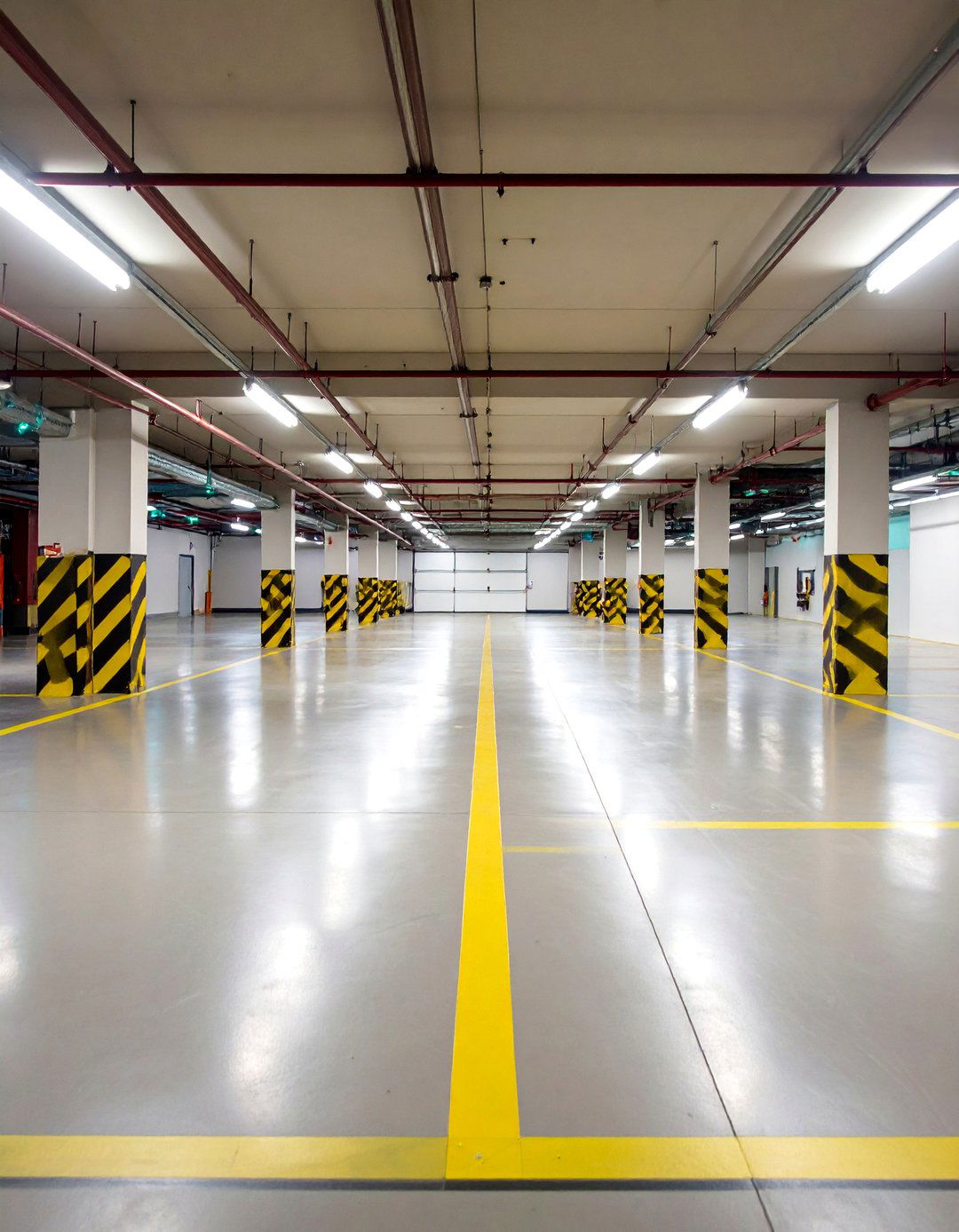
By outlining parking spots, tool staging areas, and walking lanes with high-visibility floor tape, you give every inch a job and reduce trip hazards. Tape designed for warehouses resists forklifts, so it shrugs off car tires and oil drips. Yellow marks walking aisles, red flags fire-extinguisher clearance, and black-and-yellow stripes warn of tripping edges. When workflow changes, peel and relaunch without repainting. The graphic map guides kids wheeling bikes and reminds adults to return bins inside their color borders.
18. Build a Ventilated Sports Gear Locker
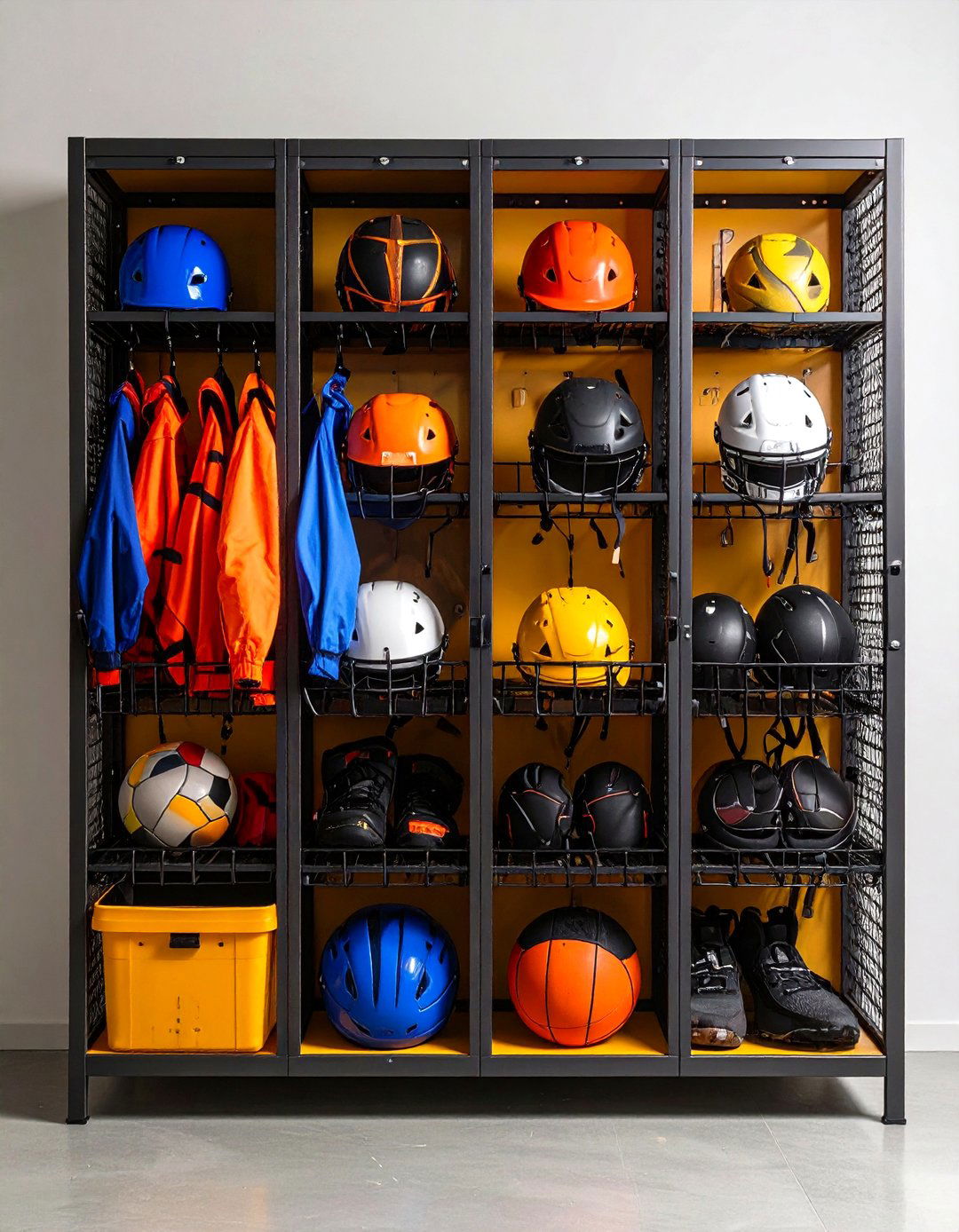
A dedicated sports locker—essentially a tall wire rack with bins, hooks, and a mesh front—keeps sweaty pads off the car hood and lets everything air-dry. Assign a column to each athlete, stash balls in the lowest basket for quick grabs, and mount double hooks above for helmets. Ventilation beats musty bags, and gear stays upright instead of rolling under tires. Come winter, swap baseball bats for skis without rebuilding the framework; the same hooks serve both seasons.
19. Mount a Charging Station Shelf for Power Tools
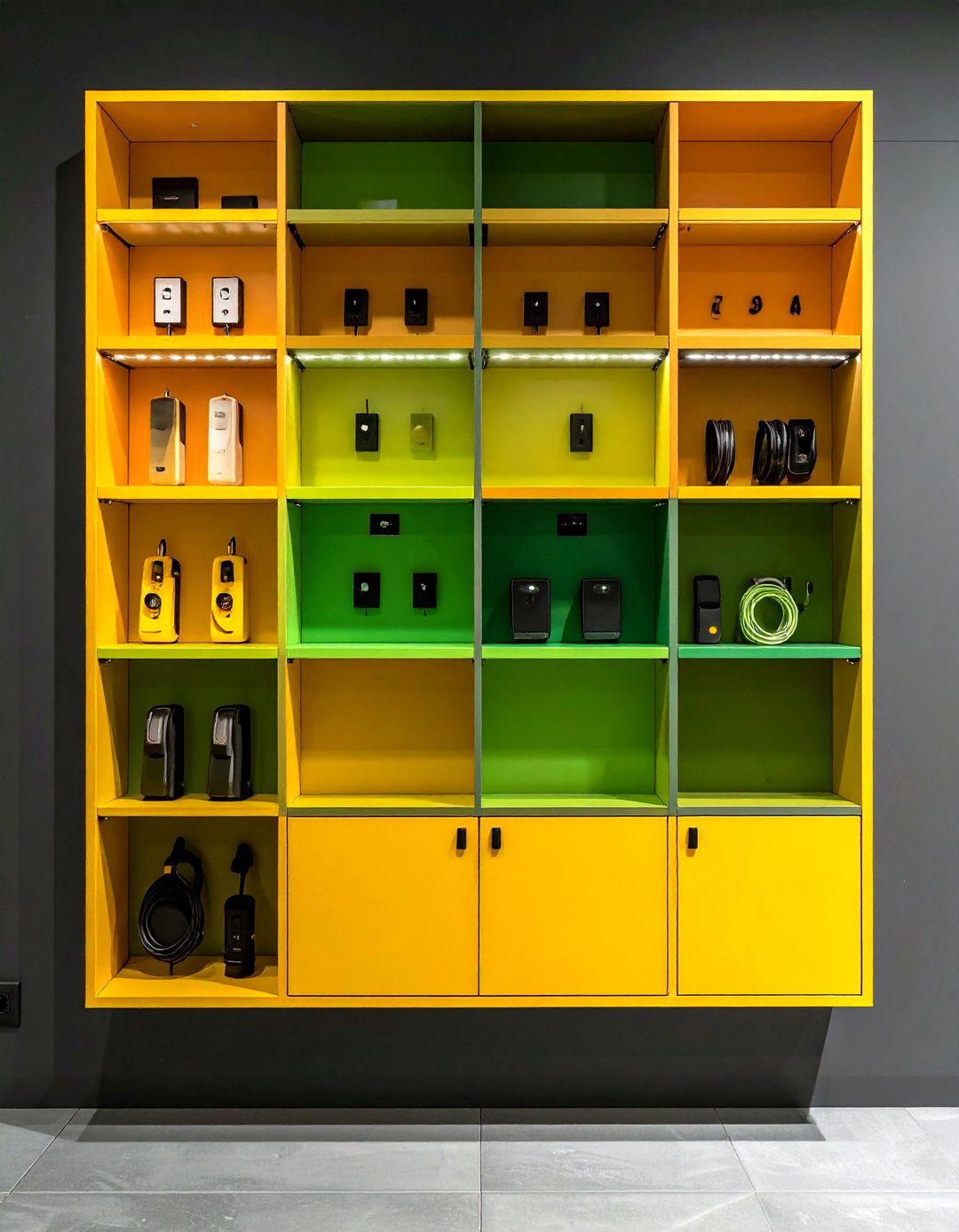
A wall-mounted charging shelf with integrated outlets corrals drill chargers, batteries, and bit cases in one fire-safe zone. Three-tier models include side hooks for tape measures and drivers, plus cord wraps that tame spaghetti cables. Mount it at eye level so LED charge indicators remain visible, and label outlets with each tool’s initial to prevent swaps. The station frees bench space for actual projects and ensures batteries stay topped off instead of hiding dead in drawers.
20. Monitor Climate with Smart Sensors
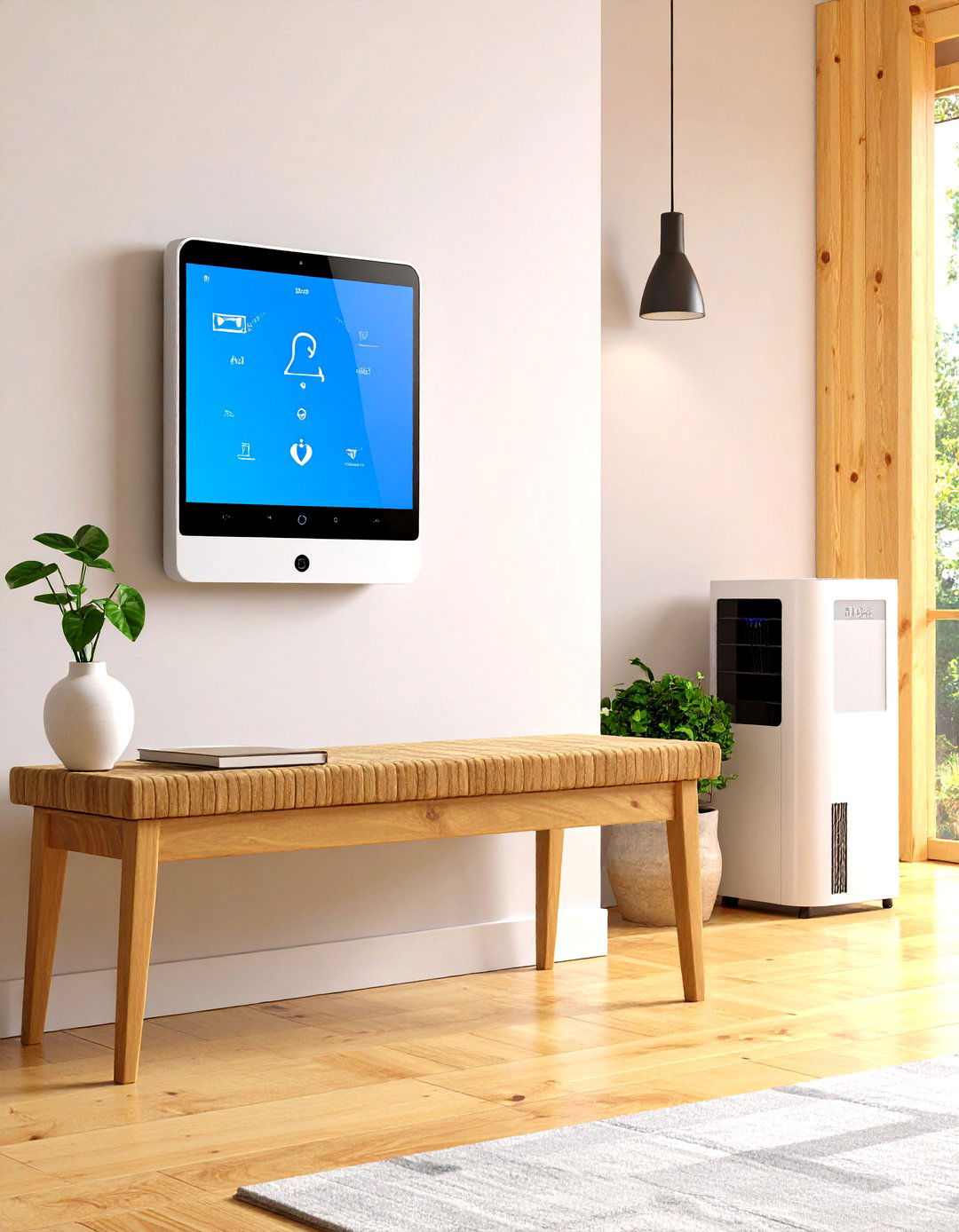
Humidity swings ruin adhesives, precision tools, and lithium batteries, but a smart temperature-and-moisture sensor alerts you before damage sets in. Mount the sensor midway up a wall away from windows for accurate readings, and sync it to a ventilation fan or dehumidifier that kicks on automatically when levels spike. Some models also detect carbon monoxide, giving an extra layer of safety during winter warm-ups. Data logs reveal trends, helping you decide if insulation or weather-stripping upgrades are worth the investment.
Conclusion:
Transforming garage storage isn’t about adding mountains of new hardware—it’s about assigning every tool, tire, and tiny screw a purposeful place and making retrieval effortless. Overhead racks reclaim ceiling voids, slatwalls and pegboards turn walls into adaptable canvases, while carts, bins, and clever DIY fixtures keep the floor open for life’s next adventure. Top it off with clear labels, smart zoning, and climate monitoring, and your once-chaotic garage evolves into a streamlined, protective extension of your home—ready to power projects, shelter gear, and greet you with calm the moment the door rolls up.






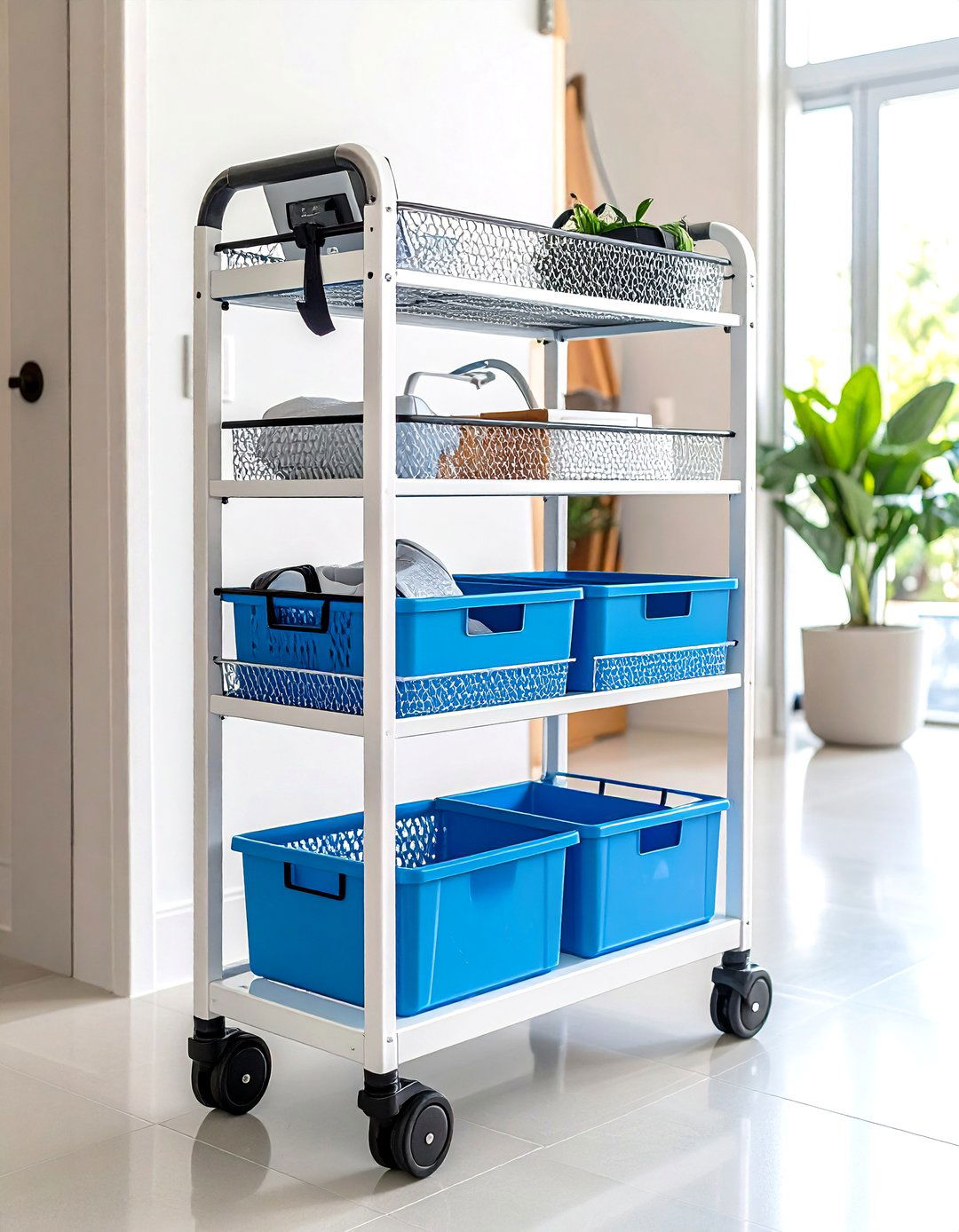

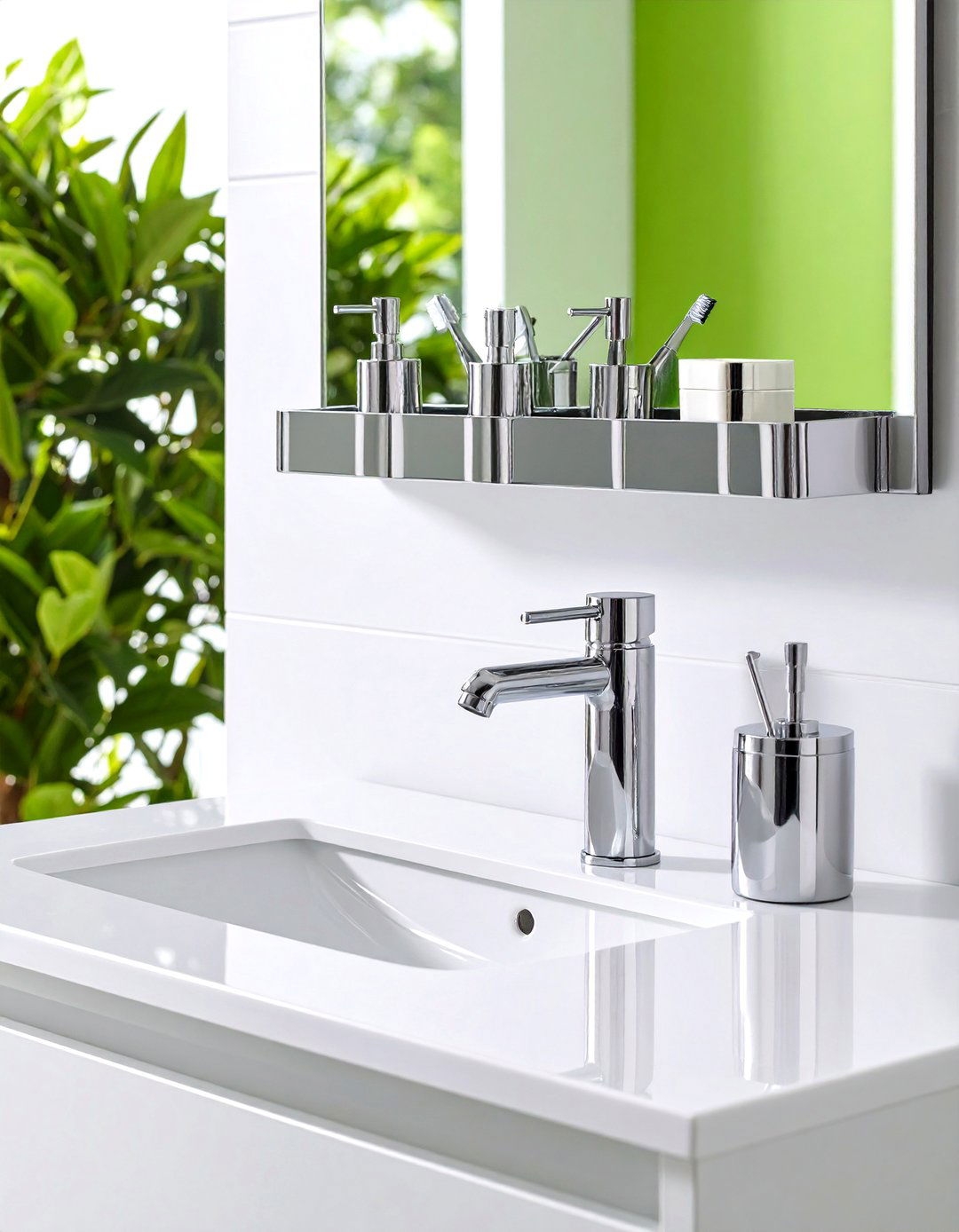
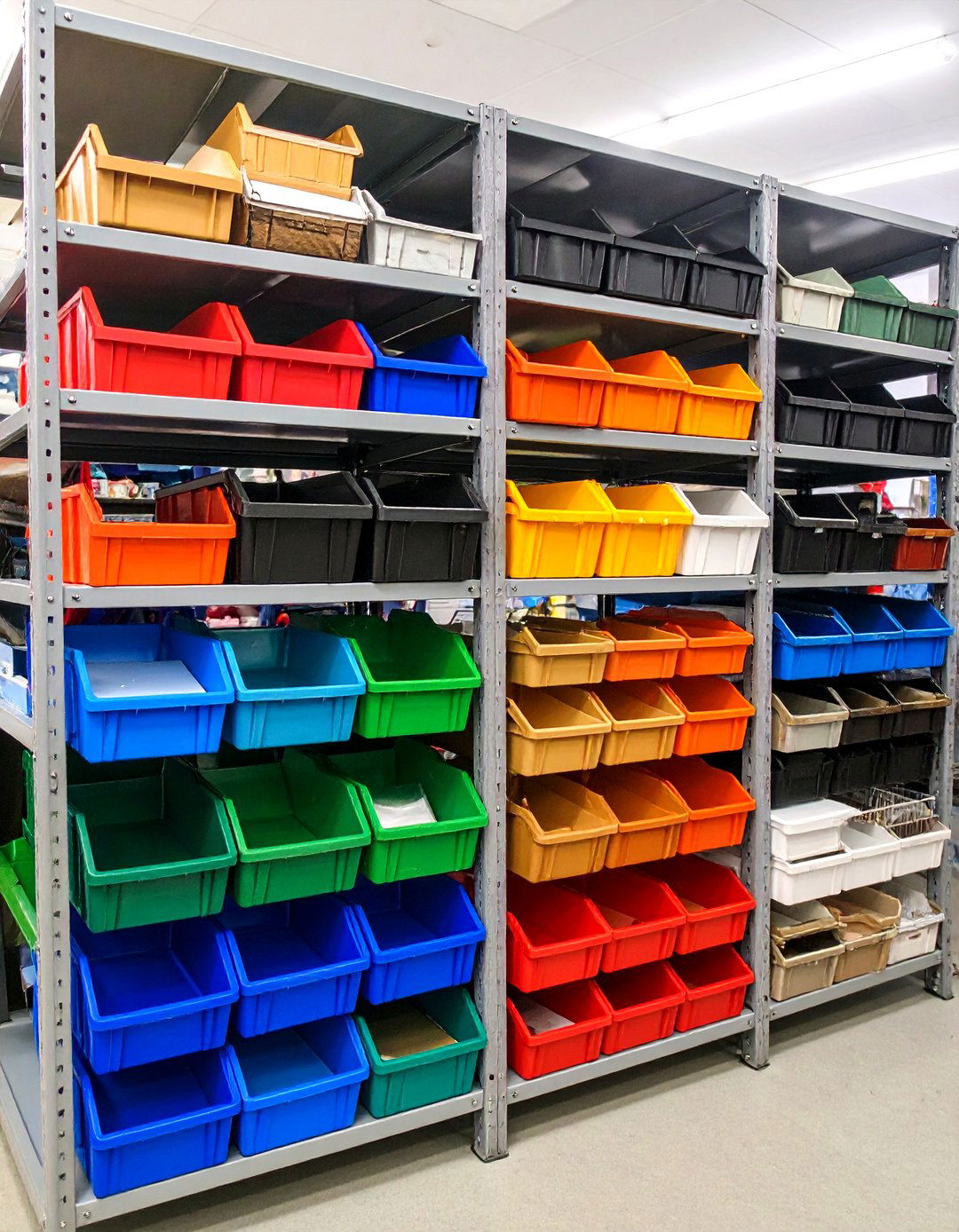
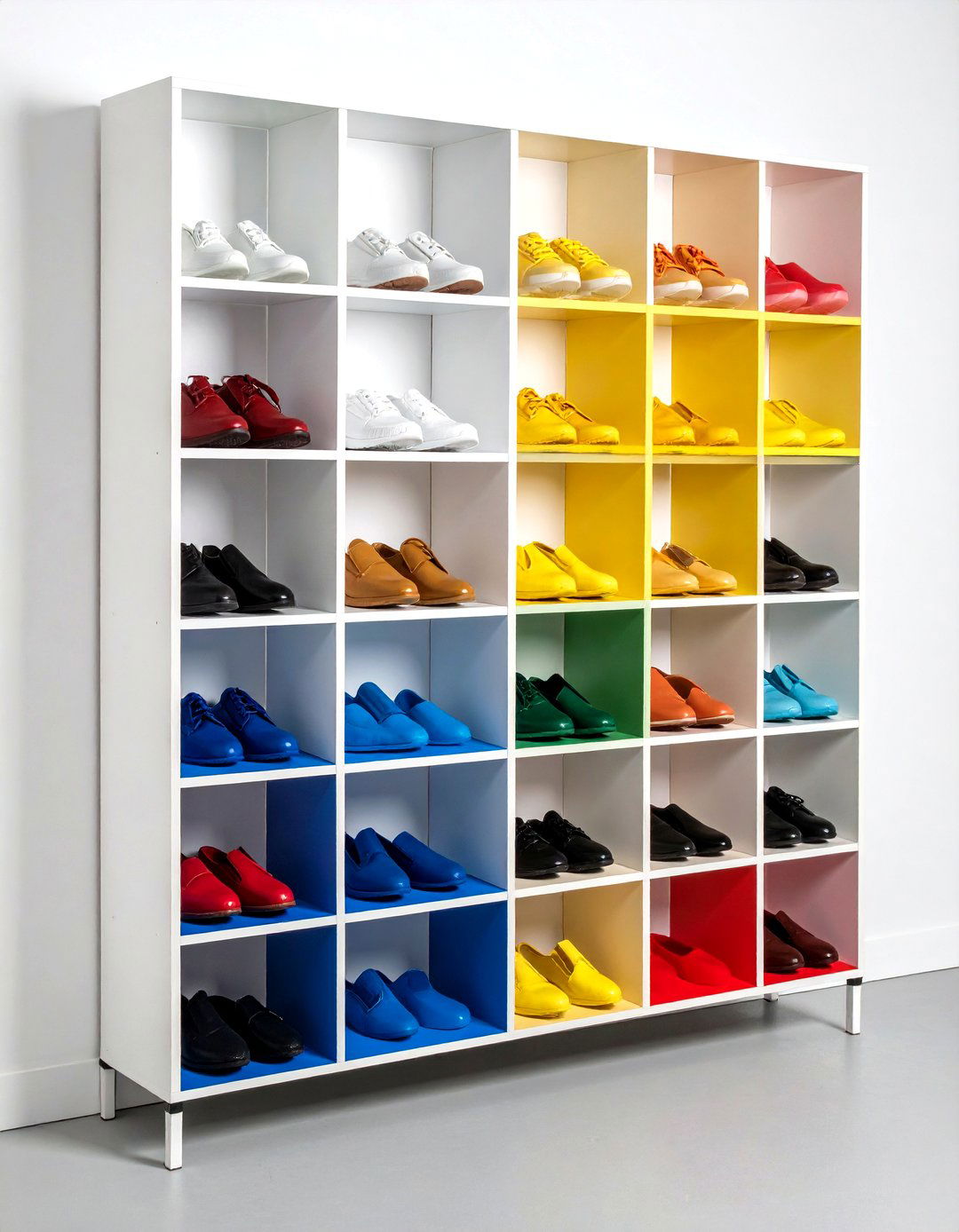

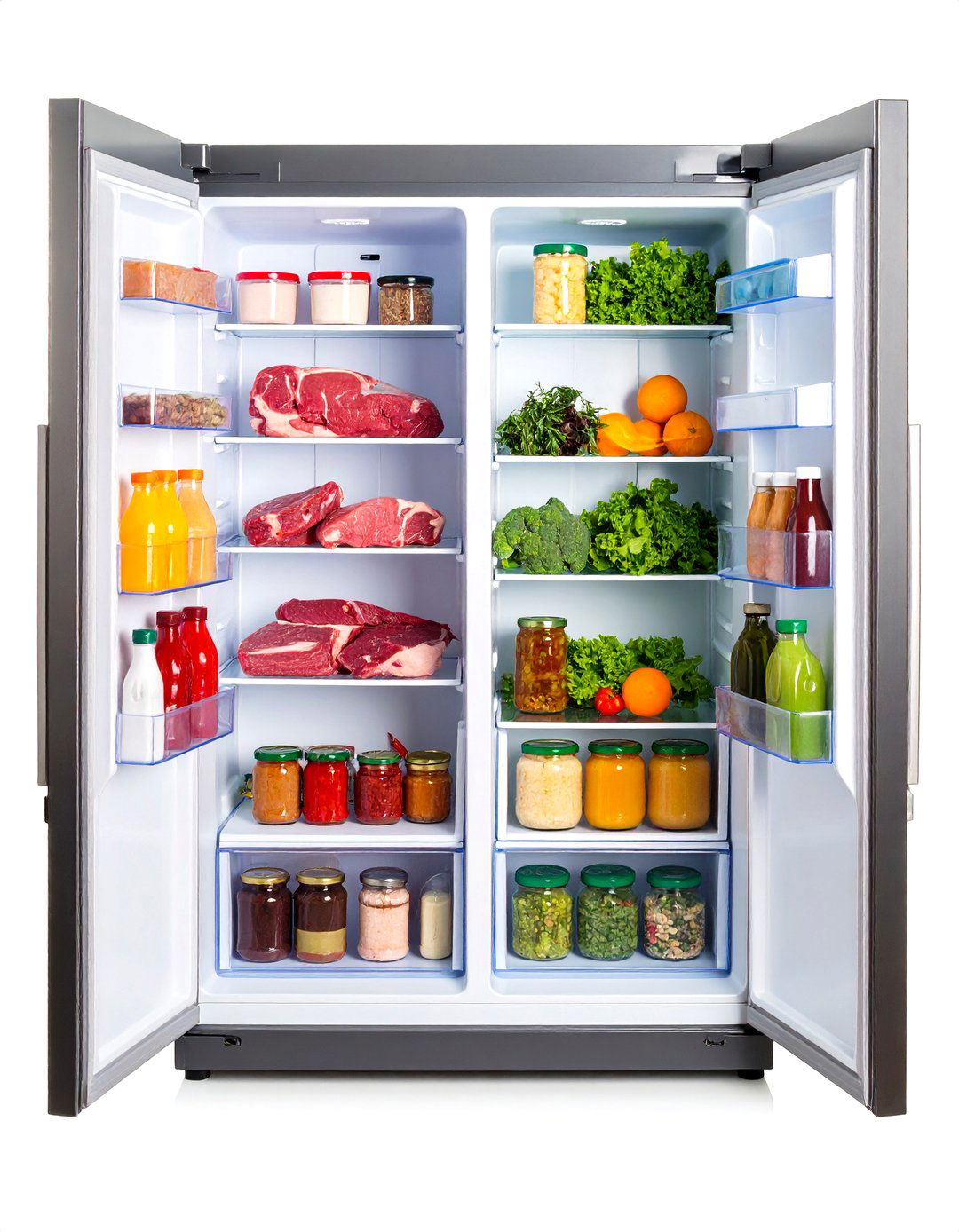

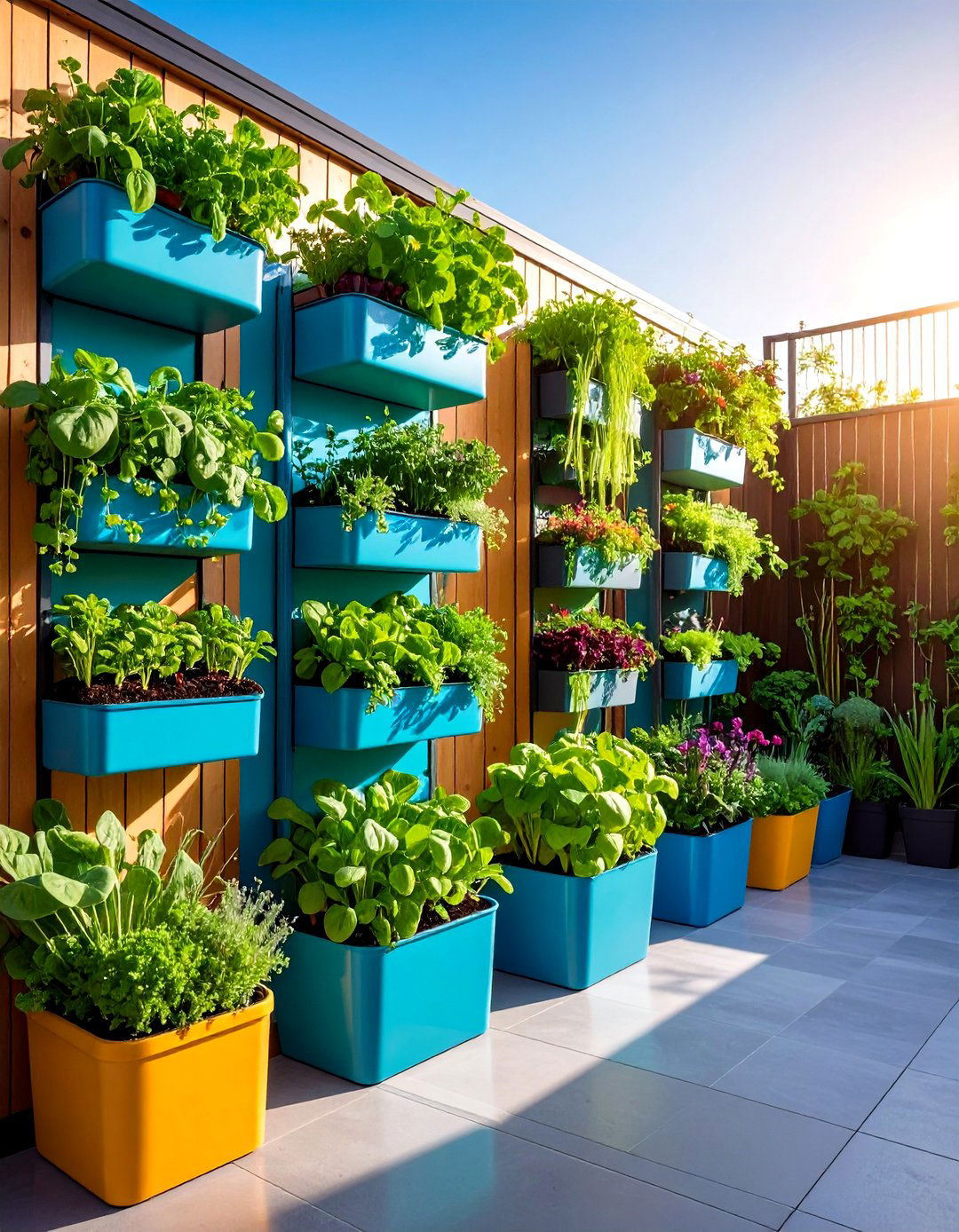

Leave a Reply